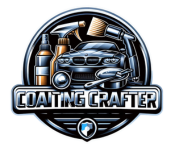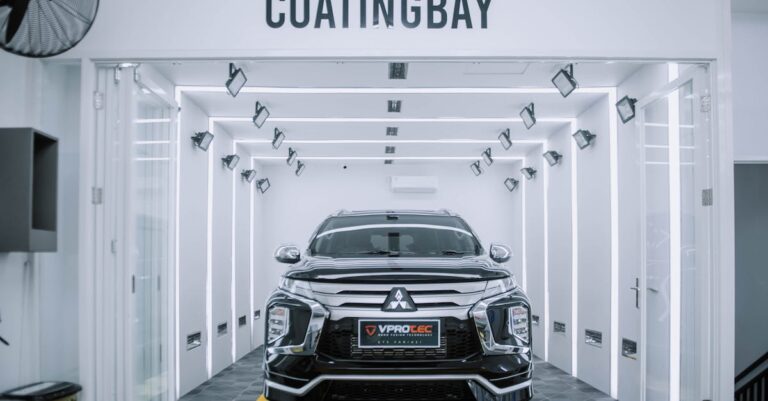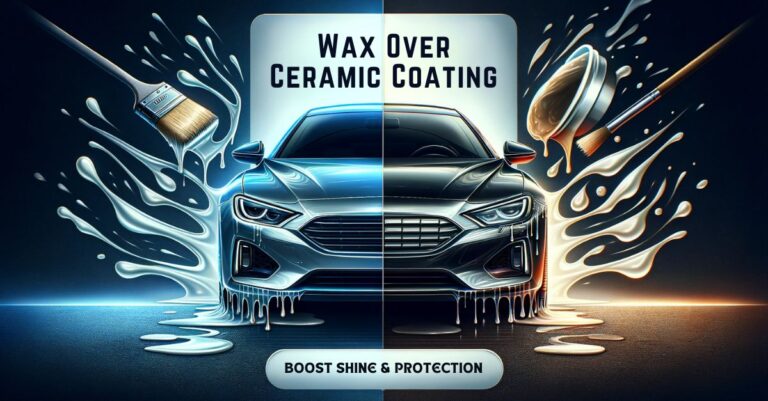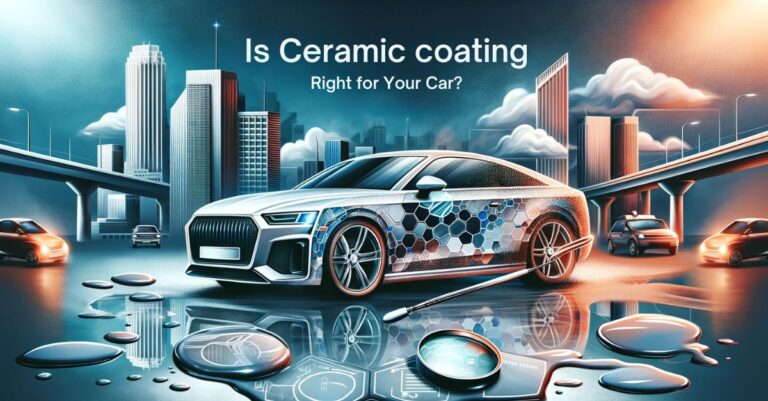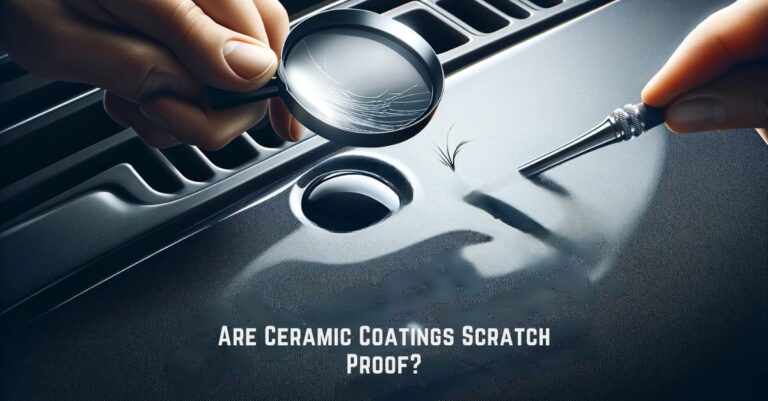Optimal Ceramic Coating Layers for Your Car: A Guide
When it comes to protecting our car’s paint, we’re always on the lookout for the best solutions. Ceramic coating has become a go-to for its durability and shine, but how many layers do we really need? It’s a common question with a not-so-simple answer.
In our dive into the world of ceramic coatings, we’ll uncover the factors that determine the ideal number of layers for your vehicle. Whether you’re a car enthusiast or just looking to preserve your ride’s showroom sparkle, understanding the ins and outs of ceramic coating is key.
Stick with us as we explore the benefits and methods behind ceramic coating applications. We’ll help you make an informed decision on just how many layers will give your car the ultimate protection and aesthetic appeal.
Factors That Determine the Number of Ceramic Coating Layers
When considering how many layers of ceramic coating to apply to your car, several factors come into play. It’s essential to evaluate each of these aspects to ensure the durability and effectiveness of the coating.
Vehicle Usage and Exposure
If we regularly subject our vehicles to harsh environmental conditions, we might require more layers of ceramic coating. Cars exposed to high levels of sunlight, road salts, or abrasive contaminants typically need additional protection.
Type of Ceramic Coating
Not all ceramic coatings are created equal. Some formulations are designed for single-layer application, while others are built for multiple layers. We’ll need to check the manufacturer’s instructions to understand the capabilities of the product we’re using.
Desired Level of Protection
Our personal preference for protection level plays a role too. Those of us seeking maximum durability and a deeper gloss finish might opt for multiple layers. However, one must consider that more layers could mean a higher cost and longer application time.
Car’s Paint Condition
The current condition of our car’s paint will influence the decision. New vehicles or those with recently corrected paintwork may not need as many layers as cars with older or more damaged surfaces.
Professional Recommendations
Often, it’s wise to seek expert advice. Professional detailers can assess our car’s specific needs and suggest the optimal number of layers for our situation. They have the experience to determine what’s best based on the car’s condition and our preferences.
Ultimately, the number of ceramic coating layers should be tailored to our vehicle’s requirements and our expectations. By thoughtfully considering these factors, we enhance our car’s appearance and prolong the life of the paintwork.
Understanding Ceramic Coating Durability and Shine
When selecting the number of ceramic coating layers for your car, it’s crucial to understand the relationship between the durability and shine of the coating. These two elements are paramount in maintaining the vehicle’s pristine appearance while also providing long-lasting protection.
Ceramic coatings enhance a vehicle’s shine by adding a reflective layer to the paint’s surface. This additional layer not only makes the car look glossier but also serves as a barrier against various damaging elements like UV rays, bird droppings, and acid rain. As we boost the number of layers, the intensity of the shine increases, providing a deeper and more impressive finish that can turn heads.
Durability, on the other hand, is the coating’s ability to withstand environmental and mechanical forces over time. A robust ceramic layer can last anywhere from 2 to 5 years, depending on the quality and application. Each additional layer incrementally increases the lifespan of the ceramic coat, offering enhanced resistance to scratches, chemicals, and weathering.
It’s not just about adding layers, though. The application process is equally important. Proper application ensures that each coat bonds correctly and cures at the right speed, which is crucial for achieving both maximum durability and optimal shine. Skipping steps or rushing the process can lead to suboptimal results, ultimately reducing the effectiveness of the ceramic coating.
| Factors | Benefit with Additional Layers |
|---|---|
| Shine | Enhanced gloss and reflection |
| Durability | Increased resistance and longevity |
| Environmental Protection | Better barrier against elements |
In our ongoing pursuit of the perfect balance, we also consider external factors like the climate in which the car is driven and parked. Extreme temperatures, high levels of solar radiation, or exposure to corrosive materials can test the limits of the ceramic coating’s durability. Additional layers may be necessary in such conditions to ensure the car remains protected year-round.
Remember, the key to maximizing both the aesthetic and protective qualities of a ceramic coating lies in a thoughtful approach to layering, combined with expert application techniques. It’s not just about piling on layers; it’s about creating a tailored armor that preserves the car’s beauty while defending against daily wear and tear.
The Benefits of Ceramic Coating Applications
When we dive into the realm of ceramic coatings, the advantages extend far beyond surface-level aesthetics. Ceramic coatings offer an array of benefits that not only enhance the car’s appearance but also protect its value.
Longevity is a prime advantage. The coating acts like an extra layer of armor, shielding the car’s paint from hazards such as road salts, tree sap, and bird droppings. This protection significantly extends the life of the paint job, maintaining that showroom-quality look for years.
Not only does it protect, but it also reduces maintenance. Ceramic coatings have hydrophobic properties, meaning they repel water and the dirt and grime that come with it. As a result, our cars remain cleaner for longer durations, and when the time for a wash does arrive, the process is far less labor-intensive.
The layering of ceramic coatings can play a pivotal role in the degree of protection offered. A single layer may be sufficient for basic protection, yet multiple layers amplify the effect. Consider the difference between wearing a single layer of sunscreen compared to several; with each layer, our skin is better shielded from the sun’s damaging rays. Similarly, every additional layer of ceramic coating increases the thickness and resilience of the protective barrier.
Here’s a look at how ceramic coatings benefit your vehicle:
- Enhances gloss and shine, giving your car that perpetual “just waxed” look.
- Offers exceptional protection against UV rays, preventing oxidation and fading.
- Creates a slick surface that makes cleaning bugs, tar, and other sticky substances easier.
- Improved hydrophobicity allows for water to bead up and roll off the surface, reducing water spots.
Admittedly, the knowledge of how these coatings work is only one part of the equation. Understanding the specific needs of your vehicle and tailoring the layers accordingly ensures that these benefits are not just theoretical possibilities but tangible results.
Methods of Applying Ceramic Coating
When considering applying ceramic coatings to vehicles, we’re met with different methods that cater to various proficiency levels and desired outcomes. It’s essential to understand these methods to achieve the best possible layering results.
DIY Application Kits
For the enthusiastic car owners who love a hands-on approach, DIY ceramic coating kits are quite popular. These kits often come with everything needed to apply the coating:
- Pre-cleaner or degreasing wash
- Base coat
- Topcoat
- Microfiber cloths
- Application sponges
The process is straightforward but requires attention to detail. We apply the pre-cleaner, then the base coat using an application sponge, following it with a topcoat for increased durability and shine. Care must be taken to ensure an even application and proper curing time, which varies by product.
Professional Detailer Application
For those seeking expertise and a guarantee of quality, professional detailers with specialized training offer ceramic coating applications. They follow a precise, multi-stage process:
- Detailed car wash
- Paint decontamination
- Paint correction to remove any scratches or swirl marks
- Application of the ceramic coating
Professionals have access to high-grade ceramic coatings not available for public purchase. Their advanced formulations often provide superior protection and longevity compared to most DIY kits.
Spraying Technique
Some advanced detailers use a spraying method to apply ceramic coatings. This requires a controlled environment and specialized equipment, ensuring a uniform coat over the car’s surface. The advantage here is a faster application process and an ability to reach intricate areas that may be challenging by hand.
Understanding the nuances of each method helps us tailor the application process to our vehicle’s needs and our personal preferences. Each method has its merit, and the right choice varies from one car owner to the next. The key is meticulous preparation and a methodical approach to maximize the ceramic coating’s effectiveness.
Determining the Ideal Number of Layers for Your Vehicle
When considering how many layers of ceramic coating your car requires, a few key factors come into play. The type of vehicle you own, the environment it’s typically exposed in, and personal preferences for paint protection and gloss are all decisive elements.
Manufacturer Recommendations are a solid starting point. Most DIY ceramic coating kits come with precise instructions regarding the number of layers. Generally, these kits suggest applying at least two layers for optimal performance. However, for those looking to enhance the durability and depth of shine, adding third or fourth layers may be beneficial.
Environmental Conditions also significantly influence the decision. Vehicles exposed to harsher climates with more intense UV rays, salty air, or industrial pollutants may benefit from additional layers. This extra protection ensures a longer-lasting barrier against the elements.
The Condition of the Vehicle’s Paint should not be overlooked. Brand new cars or those with newly restored paint jobs may achieve excellent results with fewer layers. Meanwhile, older vehicles with more wear may require more layers to fill in imperfections and achieve a uniform finish.
Professional Insight cannot be understated. Consulting with a professional detailer can provide tailored advice based on their experience. Detailers understand how different brands and formulae of ceramic coatings work on various paint types and can make an informed recommendation.
Here’s a quick glance at what to consider for the number of ceramic coating layers:
- Start with Manufacturer Recommendations
- Factor in Environmental Conditions
- Assess the Vehicle’s Paint Condition
- Seek Professional Insight for Custom Advice
Remember, more layers mean more material, time, and possibly cost. Balancing these factors with the desired level of protection and aesthetics will guide you to the ideal number of ceramic coating layers for your car. By paying close attention to these considerations, you’re well on your way to achieving a protected, glossy finish that meets your expectations and your vehicle’s specific needs.
Conclusion
We’ve explored the nuances of ceramic coating applications and how to determine the right number of layers for your car. Remember, there’s no one-size-fits-all answer. It’s about balancing protection and aesthetics with the specific needs of your vehicle and environment. Trusting in professional advice and adhering to manufacturer guidelines will ensure your car receives the optimal level of care. With the right approach, your vehicle’s shine and shield will stand the test of time.
